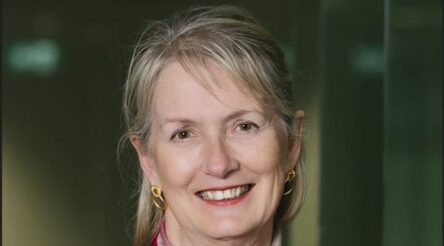What next after a NSW Modern Manufacturing Commissioner – by Julie Harrison

The young New South Wales government perplexed many when it axed the role of Commissioner for Modern Manufacturing. Here manufacturer Julie Harrison asks ‘where are we headed?’, and offers a way forward.
The decision of the New South Wales government to axe the role of Commissioner of Modern Manufacturing just weeks ago came as a shock to many Australian manufacturers.
Not only had the crucial role been in existence for less than a year, but the Commissioner’s much-anticipated Modern Manufacturing Strategy report had not been published or her views shared with industry.
The question that is raised by this action, in Australia’s largest economy, is not so much ‘what do we do now?’, because manufacturing businesses are agile and able to respond tactically. The bigger question is ‘where are we headed?’
It has been six years since Australia lost its biggest value-adding, advanced manufacturing industry in the form of the car industry. Other nations could make cars cheaper and in greater variety than our Victorian and South Australian plants and we could no longer justify subsidies for an otherwise impressive industry.
But the successor to car-making was supposed to be modern manufacturing and advanced manufacturing. Manufacturers would aim for either higher value-add status, such as hi-tech component-making, defence industry manufacturing, green energy and biotech, or adopt modern manufacturing techniques where very smart people – along with machine learning, AI, rare earths, critical minerals and internet-of-things technologies etc. – create unique abilities.
The need to plan for a future of manufacturing that encompasses these ideas is fairly important. Australia is a sophisticated, growing economy that requires innovative and high-end solutions, ranging from green energy and water management to advanced healthcare and agriculture.
How many of these evolving requirements can we respond to domestically if we don’t have the ability to invent, design and make them?
As reported in the NSW Modern Manufacturing Taskforce Report of July 2022, Australia ranked last in the OECD for manufacturing in 2021-22, with just 6 per cent of GDP attributed to manufacturing (down from 11 per cent in 2002). This as compared to Singapore, 21 per cent, Germany, 18 per cent, Belgium, 13 per cent, Israel, 11 per cent, Canada, 10 per cent and the United Kingdom at 9 per cent.
In the 1960s, Australia’s share of manufacturing was in the mid 20 per cent range and even as late as the 1980s manufacturing was still the biggest employer in NSW.
The COVID-19 supply chain disruption exposed a shortfall in our sovereign productive abilities, and as we resolve that problem we shouldn’t become too focused on labour cost or fancy new machines.
In the advanced manufacturing field the labour cost differential is not as important as it is in high volume manufacturing because advanced manufacturers are relying on high-skilled and qualified workers, many of them in the STEM-educated fields.
And access to the latest machinery is not difficult if an Australian firm wants to move to the high value end of their sector. Access to rare earths and critical minerals is also not a problem for Australia, although they could pose a future problem if we do not refine and process them here.
I would even argue that financial assistance and incentives from government is not the only answer to manufacturing’s problems. It’s doubtful that government involvement is going to create an industry or sector where it didn’t exist before.
Which leaves what role for government? My view of the NSW Commissioner for Modern Manufacturing was she was in a great place to develop a strategy for the state – and by default, Australia – which would set out how we could use our high educational standards, our resources industry and our knack for innovation, to offer a unique manufacturing proposition to the world.
One such unique offering could be sustainable manufacturing. On one level this could foster the world’s best environmental and employment standards, and include our ability to produce and use renewable energy sources such as co-located solar PV and batteries and our putative hydrogen energy industry.
However, Australian manufacturing also has an opportunity to pursue a whole-of-life sustainability model. Under this model we would recycle everything into new manufactured goods, we’d preserve and recycle water, make our goods with renewable energy, create sustainable and safe workplaces for employees and build this into our manufactured goods.
This approach is good for our environment and our employees, but Australia could also build a unique branding for export goods made under whole-of-life sustainability protocols.
Australia has such a high standard of STEM-qualified people and they want to be in careers where there is an exciting future; they also want to be contributing to a better, cleaner world and I believe we can bring our bright, innovative young people into manufacturing if they see it as sustainable and progressive rather than ‘dirty’ and a sector of the past.
Governments can’t come up with winning ideas – that’s up to the private sector. But government has a role to play in strategy and structuring and setting a direction. So, it was disappointing to see the NSW government drop their office of Commissioner for Modern Manufacturing before we saw what her plan might be.
If we want manufacturing to thrive in Australia, manufacturing businesses like my own certainly have to play their part. But so do governments.
Julie Harrison is the chief executive officer of Sydney-based Harrison Manufacturing Co, Australia’s largest maker of grease and other high-end industrial lubricants. Julie is the Group Director of the larger Harrison group of businesses and has oversight of five companies employing 170 people at 17 sites across Australia and New Zealand. She is a CPA and a former lecturer in accounting at Macquarie University, and she is focused on quality corporate governance and investment in Australian manufacturing and R&D. In 2023 she led the response to an attempted cyber-attack on Harrison Group.
Topics AI Analysis and Commentary Commissioner of Modern Manufacturing Covid-19 Critical minerals Harrison Manufacturing Co internet of things Julie Harrison lubricants machine learning Manufacturing News Modern Manufacturing Strategy NSW Modern Manufacturing Taskforce Report Rare earths value-adding
@aumanufacturing Sections
Analysis and Commentary Awards Defence Manufacturing News Podcast Technology Videos










